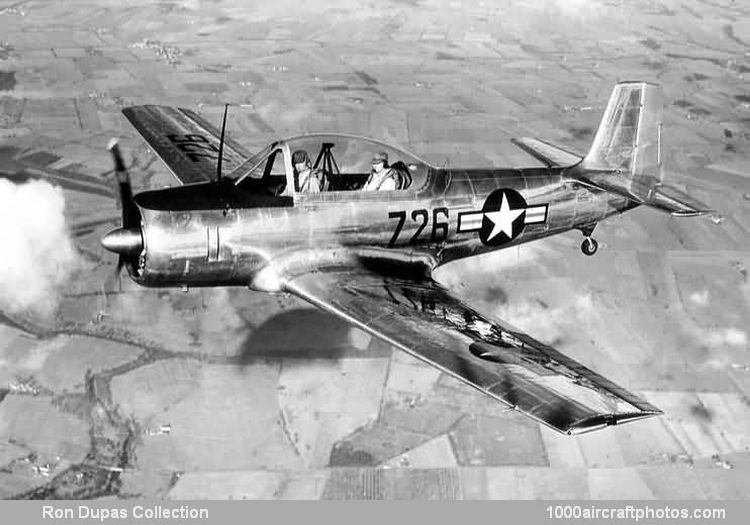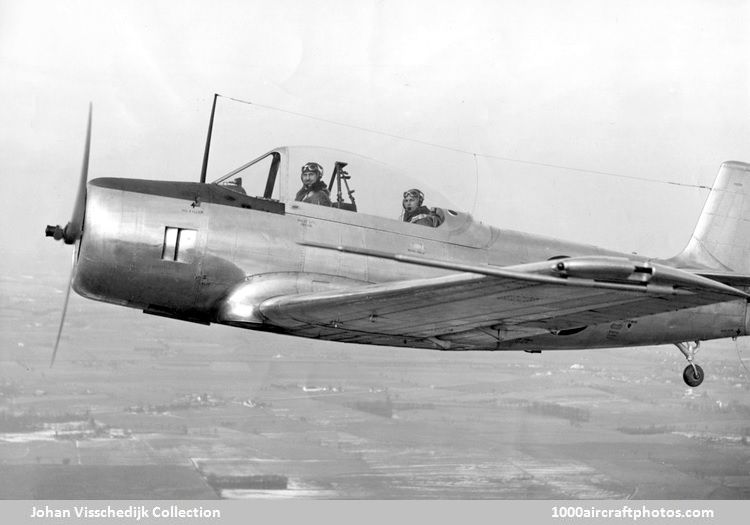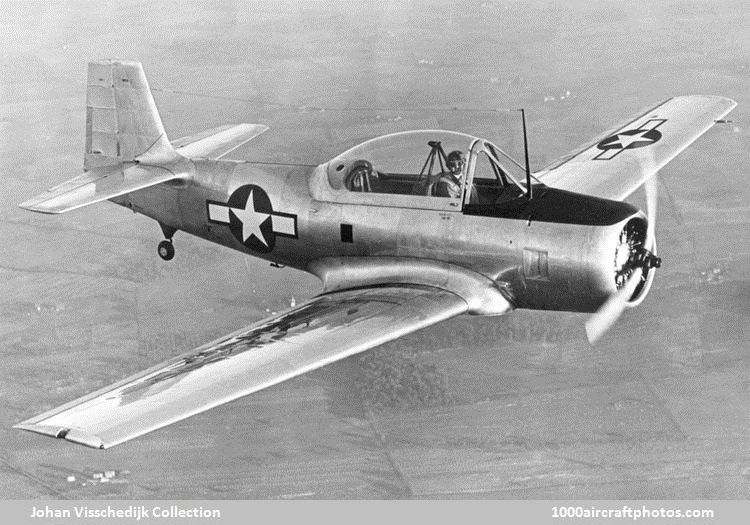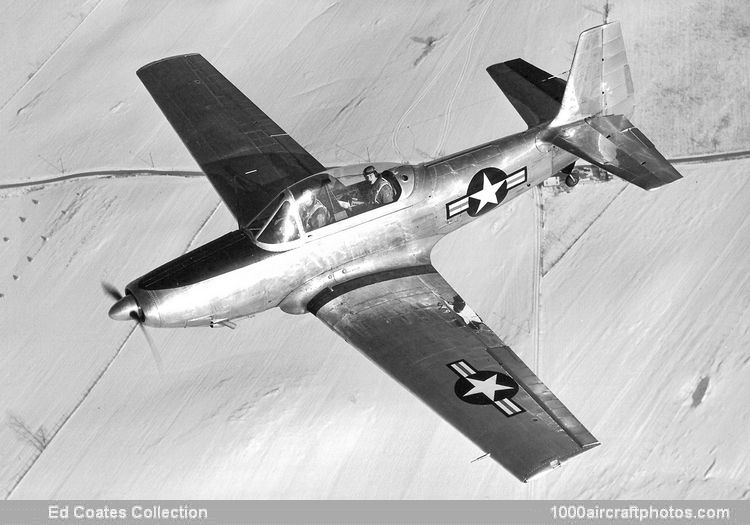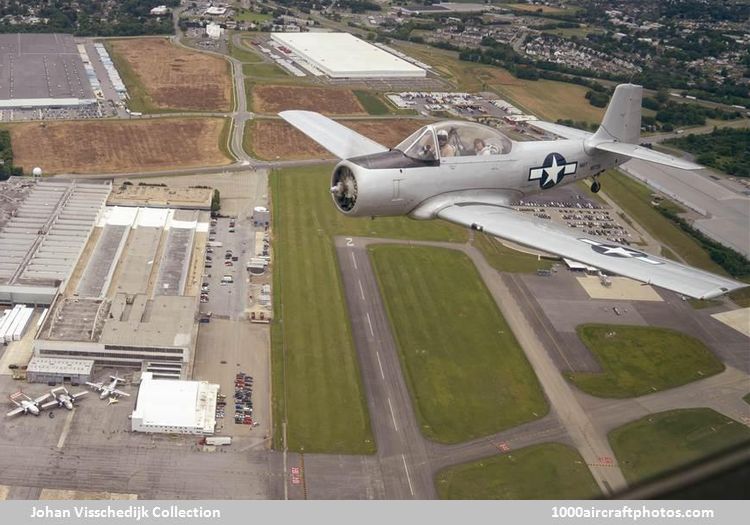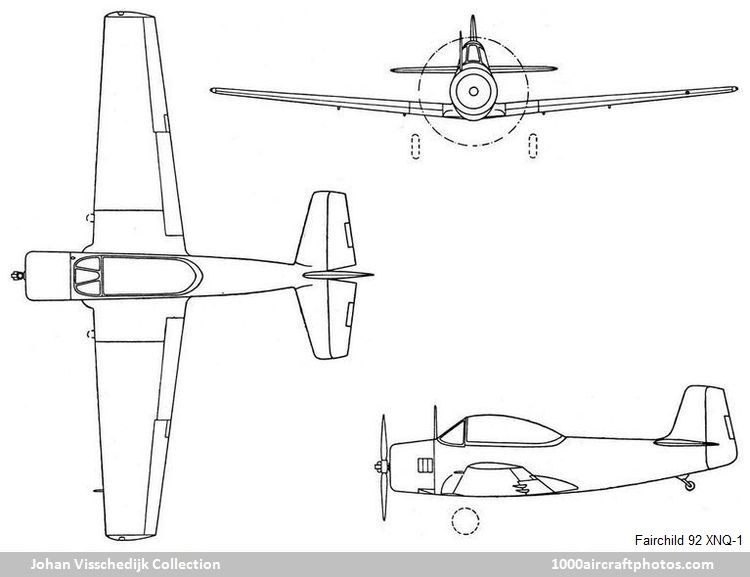Top: Photographed ca. 1947, courtesy The Fairchild Corporation
09/30/2024. Remarks by
Johan Visschedijk: "This aircraft was designed by Armand Thielblot to an April 1945 USN specification for a new primary trainer, a mockup was presented the following September. Three prototypes were ordered by the Navy under the designation XNQ-1, two flying examples (BuNo. 75725 and 75726) and one for static testing. The first prototype was first flown by Richard Henson at Hagerstown, Maryland on October 7, 1946, the second first flew February 10, 1947.
In 1947 both prototypes were delivered to the
NAS Anacostia, Washington, District of Columbia, USA, where they were evaluated by the USN in conjunction with the
North American XSN2J-1 scout trainer prototype, but the new training syllabus for which the two new types were intended was not in the event adopted.
XNQ-1 (75725) (
Johan Visschedijk Collection)
The USAAF became interested in the Navy aircraft as a primary trainer, although fitted with a larger stabilizer. Fairchild selected the second prototype 75726 for the evaluation by the USAAF under the temporarily designation T-31. While both aircraft were being modified, Fairchild used older photos of the first prototype 75725 (shown above) for promotion and stamped on the back "Fairchild T-31 Trainer". Here the original photo caption:
Lycoming GSO-580 engine test bed (75725) (
Ed Coates Memorial Collection)
The first prototype (75725) was modified to an engine test bed, its Lycoming R-680-13 radial being replaced by a Lycoming GSO-580 horizontally-opposed eight-cylinder. It was lost in an accident in 1950.
Fitted with a larger stabilizer, the second prototype (75726), shown on top of the page, was evaluated by the USAF in 1949, designated T-31, others evaluated were the Beech 45 T-34 and the Temco TE-1A. On March 24, 1949, after only three weeks of trials at Wright Field, Dayton, Ohio, the T-31 was selected. Fairchild would produce 100 aircraft as the Model 129, however, due to budget restrictions the order was cancelled later in 1949.
The XNQ-1 (75726) was returned to the USN, whereafter it was transferred to the USN Test Pilot School at
NAS Patuxent River, Maryland. After being damaged in a landing accident, the aircraft was struck off charge in 1953. Subsequently it came on the civil register as N5756 and was operated for ten years by the Civil Air Patrol in Washington, whereafter it was acquired by a private owner. In the mid-1970s the aircraft was offered to the Antique Airplane Association of Blakesburg, Iowa. On April 15, 1983, the aircraft was registered to Dominick D. 'Don' Pellegreno of Rhome, Texas, who restored the aircraft, and it was flown again on May 20, 1992.
XNQ-1 over Hagerstown (N5756) (
Johan Visschedijk Collection)
Very recently, August 31, 2024, the aircraft became part of the largest collection of Fairchild aircraft and memorabilia in the world, when it was registered to the Hagerstown Aviation Museum at Hagerstown, Maryland."
The following data relate to the XNQ-1.
Type: Two-seat Primary-Basic Trainer.
Wings: Low-wing cantilever monoplane. All-metal structure with stressed metal skin. Trailing edge flaps between ailerons and root joints. Flaps all-metal including covering, ailerons metal-framed and fabric covered.
Fuselage: All-metal structure.
Tail unit: Cantilever monoplane type. All-metal tail plane and fin, metal-framed fabric covered elevators and rudder. Trim-tab in movable surfaces.
Landing gear: Retractable type. Main wheels raised inwardly into pockets in leading edge of wing roots. Electrical retraction. Non-retracting castoring and steerable tail wheel.
Power plant: One Lycoming R-680-13 nine-cylinder radial air-cooled engine with normal rating of 280 hp and with 295 hp available for take off. Hamilton Standard two-blade constant-speed airscrew. Fuel capacity 80 gal (302 l).
Accommodation: Crew of two in tandem beneath a one-piece sliding "bubble" canopy. Dual controls. Air Force-Navy standardized functional safety cockpit layout.
